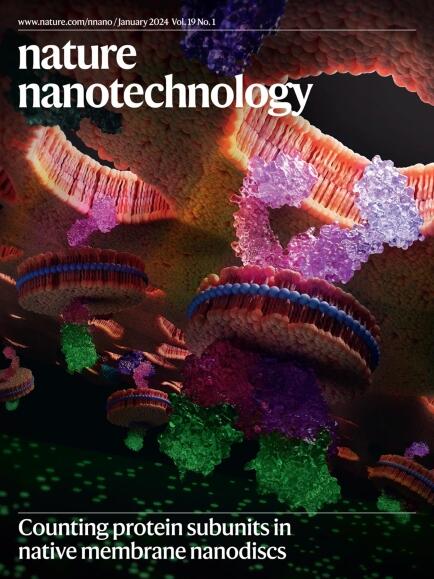Tuning payload delivery in tumour cylindroids using gold nanoparticles
IF 34.9
1区 材料科学
Q1 MATERIALS SCIENCE, MULTIDISCIPLINARY
引用次数: 446
Abstract
Nanoparticles have great potential as controllable drug delivery vehicles because of their size and modular functionality. Timing and location are important parameters when optimizing nanoparticles for delivery of chemotherapeutics. Here, we show that gold nanoparticles carrying either fluorescein or doxorubicin molecules move and localize differently in an in vitro three-dimensional model of tumour tissue, depending on whether the nanoparticles are positively or negatively charged. Fluorescence microscopy and mathematical modelling show that uptake, not diffusion, is the dominant mechanism in particle delivery. Our results indicate that positive particles may be more effective for drug delivery because they are taken up to a greater extent by proliferating cells. Negative particles, which diffuse more quickly, may perform better when delivering drugs deep into tissues. An understanding of how surface charge can control tissue penetration and drug release may overcome some of the current limitations in drug delivery. In vitro studies using three-dimensional tumour models and mathematical simulation show that positively charged particles are better for delivering therapeutics to viable cells, whereas negative particles are better when deep tissue penetration is required.

利用金纳米粒子调整肿瘤圆柱中的有效载荷输送
纳米颗粒因其尺寸和模块化功能而具有作为可控药物递送载体的巨大潜力。在优化纳米颗粒的化疗药物递送时,时间和位置是重要的参数。在这里,我们展示了携带荧光素或多柔比星分子的金纳米粒子在体外肿瘤组织三维模型中的移动和定位方式,这取决于纳米粒子带正电还是负电。荧光显微镜和数学建模表明,颗粒输送的主要机制是吸收,而不是扩散。我们的研究结果表明,正电粒子可能更有效,因为增殖细胞对它们的吸收程度更高。而扩散速度更快的负性微粒在向组织深层递送药物时可能表现更佳。了解表面电荷如何控制组织渗透和药物释放,可能会克服目前给药过程中的一些限制。利用三维肿瘤模型和数学模拟进行的体外研究表明,带正电荷的微粒更适合向有活力的细胞输送药物,而当需要深入组织时,带负电荷的微粒则更适合。
本文章由计算机程序翻译,如有差异,请以英文原文为准。
求助全文
约1分钟内获得全文
求助全文
来源期刊

Nature nanotechnology
工程技术-材料科学:综合
CiteScore
59.70
自引率
0.80%
发文量
196
审稿时长
4-8 weeks
期刊介绍:
Nature Nanotechnology is a prestigious journal that publishes high-quality papers in various areas of nanoscience and nanotechnology. The journal focuses on the design, characterization, and production of structures, devices, and systems that manipulate and control materials at atomic, molecular, and macromolecular scales. It encompasses both bottom-up and top-down approaches, as well as their combinations.
Furthermore, Nature Nanotechnology fosters the exchange of ideas among researchers from diverse disciplines such as chemistry, physics, material science, biomedical research, engineering, and more. It promotes collaboration at the forefront of this multidisciplinary field. The journal covers a wide range of topics, from fundamental research in physics, chemistry, and biology, including computational work and simulations, to the development of innovative devices and technologies for various industrial sectors such as information technology, medicine, manufacturing, high-performance materials, energy, and environmental technologies. It includes coverage of organic, inorganic, and hybrid materials.
 求助内容:
求助内容: 应助结果提醒方式:
应助结果提醒方式:


